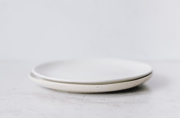
Is your home starting to feel a little… heavy? Not just the furniture, but the invisible weight of “stuff” that seems to multiply when you’re not looking?
If you’ve ever opened a closet and quickly shut it again, or if “get organized” has been on your to-do list since the Clinton administration, you’re not alone.
Clutter can sneak up on even the most seasoned, making homes feel less like sanctuaries and more like storage units. But what if there’s a simple, flexible plan that can help you reclaim your space—and your peace of mind—without turning your life upside down?
What Exactly Is the Clutter-Free Countdown?
Think of the Clutter-Free Countdown as your personal, low-pressure “spring cleaning” challenge—except you can start it any time of year, and you don’t have to tackle the whole house at once.
The idea is simple: you pick a time frame (a week, two weeks, a month—whatever fits your life), and each day, you focus on decluttering just one small area or category. Maybe it’s a single drawer, a shelf, or the infamous “junk bowl” on the kitchen counter. The key is to keep it bite-sized and manageable.
Professional organizers like Lauren Saltman (Living Simplified) and Heather Aiello (The Organized You) swear by this method. Why? Because it’s designed to build momentum without overwhelming you. Each day’s mini-mission is a win, and those wins add up fast. Before you know it, your home feels lighter, your mind feels clearer, and you’re wondering why you didn’t start sooner.
Why Does This Work—Especially for You?
Decluttering can feel daunting, especially if you’ve spent decades accumulating memories, mementos, and, yes, a few too many “just in case” items. The Clutter-Free Countdown works because it respects your time, your energy, and your emotional attachment to your things. It’s not about tossing everything in sight; it’s about making thoughtful decisions, one small step at a time.
Plus, as you get older, your needs and lifestyles change. Maybe you’re downsizing, or maybe you just want to make your home safer and easier to navigate. A clutter-free space isn’t just about aesthetics—it’s about comfort, safety, and peace of mind.
How to Start Your Own Clutter-Free Countdown
1. Pick Your Focus
Start by choosing a single space or category. Don’t try to tackle the whole kitchen in one go—start with the pantry, the utensil drawer, or even just the “mystery shelf” in the fridge. The more specific, the better. This helps prevent decision fatigue (that glazed-over feeling when you’ve made too many choices in a row).
2. Schedule It—And Treat It Like an Appointment
Put your decluttering session on your calendar, just like you would a doctor’s appointment or a lunch date. Even 10-15 minutes a day is enough. Set a recurring reminder on your phone or jot it on your wall calendar. Consistency is the secret sauce here.
3. Gather Your Tools
You don’t need fancy gadgets—just a few basics:
- A trash bag for things to toss
- A “donate” bin for items in good shape
- A “relocate” bin for things that belong elsewhere
- (Optional) A “maybe” box for items you’re not sure about—revisit it at the end of your countdown
If you’re dealing with paperwork, keep a shredder handy. For seasonal items, a storage box can help.
Also read: Transform your chaos into order with these 7 genius organizing tricks–Never lose anything again!
4. Set a Timer
This is your permission slip to stop before you’re exhausted. Set a timer for 15-30 minutes. When it goes off, you’re done for the day—unless you’re on a roll and want to keep going. The goal is to finish each session feeling accomplished, not drained.
5. Use a Decluttering Method That Works for You
There’s no one-size-fits-all approach. Some people like the “edit and reset” method: remove anything you don’t use, need, or love, then reset the space with only what supports your current lifestyle. Others prefer the “one tote” method (fill a tote with items to donate each day) or the “clutter audit” (quickly scan a space and remove obvious clutter).
The important thing is to keep it simple and focused. Don’t get sidetracked by reorganizing or deep cleaning—just declutter.
6. Celebrate Your Progress
This is the fun part! Take before-and-after photos, check off each day on a calendar, or treat yourself to a small reward after a week of consistent effort. Seeing your progress is incredibly motivating.
Extra Tips for a Truly Lighter Home
- Enlist a friend or family member for accountability—or just for company! Decluttering is more fun with a buddy.
- If you’re struggling to let go of sentimental items, try the “memory box” approach: keep a small box for your most treasured keepsakes, and limit yourself to what fits inside.
- Donate items to causes you care about. Knowing that your things will help someone else can make it easier to part with them.
- If you have mobility or health concerns, don’t hesitate to ask for help with heavy lifting or reaching high shelves.
Also read: The surprising items retirees still hold on to—and why it may be time to let them go
The Emotional Side of Decluttering
Sometimes, letting go is hard. Things can hold memories, and it’s normal to feel a little tug at the heartstrings. If you find yourself stuck, ask yourself:
- Does this item still serve me?
- Would someone else benefit from it more?
- Am I keeping it out of guilt or obligation?
Remember, decluttering isn’t about erasing your past; it’s about making room for the life you want to live now.
Read next:
- Are you secretly sabotaging your own space? 5 decluttering rules organizers live by
- “Swedish Death Cleaning” may be the most meaningful way to declutter your life
- Are these 27 kitchen items secretly harming your health? Here’s what you might need to toss today
Have you tried a decluttering challenge before? What’s the hardest area in your home to tackle? Do you have a favorite tip or a success story to share?






